Image
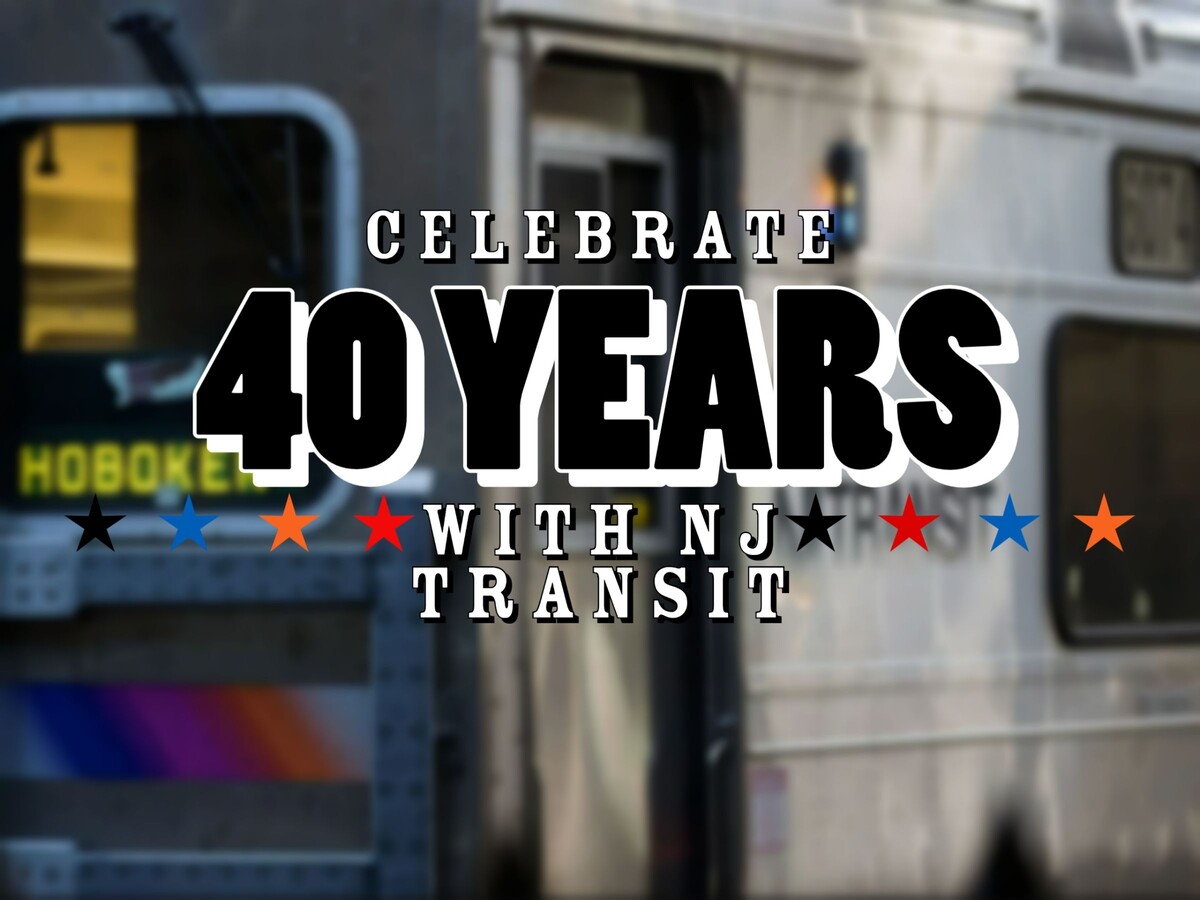

January 1, 2023, marked the 40th anniversary of NJ TRANSIT assuming control and management of New Jersey’s commuter rail network, previously operated by Conrail.
Shortly after midnight on January 1, 1983, the first “NJ TRANSIT” trains departed Hoboken and Penn Station New York with crews who were then officially NJ TRANSIT employees.
Over the past 40 years, NJ TRANSIT has steadily invested in modernized equipment, rebuilding the infrastructure and right-of-way, increasing service to Midtown Manhattan, introducing one-seat rides to Penn Station New York on three rail lines, increasing overall capacity, extending electrification on two busy rail corridors, and much more.
“Congratulations to the men and women of Rail Operations for a job well done.” said New Jersey Department of Transportation Commissioner and NJ TRANSIT Board Chair Diane Gutierrez-Scaccetti.
“Our congratulations and thanks go out to the entire NJ TRANSIT Rail Operations team, past and present, on the occasion of its 40th anniversary,” said NJ TRANSIT President & CEO Kevin S. Corbett. “With a proud legacy behind us, an extraordinary team now in place, major rail infrastructure projects like the Portal North Bridge Replacement Project currently underway, and 138 new multi-level rail cars beginning to arrive in 2024, the future looks very bright for this essential division of NJ TRANSIT – and more importantly, for the millions of customers who depend on it every year.”
In recognition of this anniversary, NJ TRANSIT has painted four locomotives in “Heritage” paint schemes to recognize the predecessor railroads and employees that make up our system. ALP46A 4636 wears a Pennsylvania Railroad-inspired scheme in the photo (below), while GP40PH-2 4109 appears reminiscent of its as-delivered Central Railroad of New Jersey paint scheme. Cheers to 40 years!
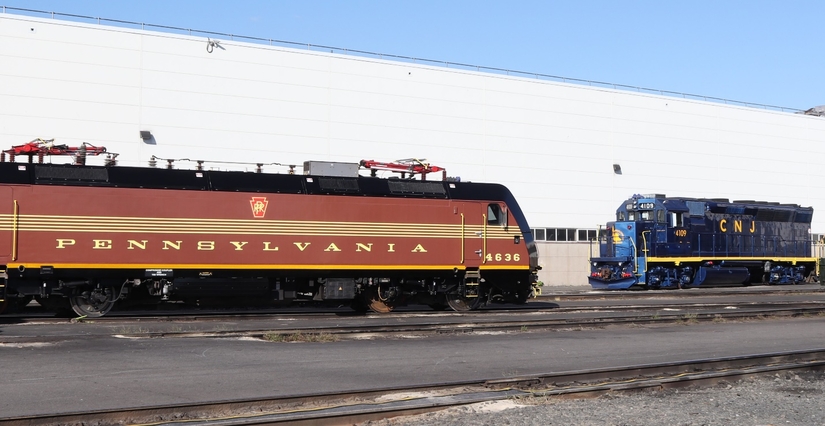 ALP46A 4636 wears a Pennsylvania Railroad-inspired scheme, while GP40PH-2 4109 appears reminiscent of its as-delivered Central Railroad of New Jersey paint scheme
ALP46A 4636 wears a Pennsylvania Railroad-inspired scheme, while GP40PH-2 4109 appears reminiscent of its as-delivered Central Railroad of New Jersey paint schemeThe History of New Jersey Transit:
On January 1, 1983, a dedicated group of employees — combined with support from the state and federal governments — began transforming an aging and disjointed passenger railroad system into one of the premier passenger railroads of North America.
A combination of needed investments, smart planning, and a shift in railroad culture from “moving equipment” to “serving customers” led to the delivery of a safer and more convenient, reliable, and cost-effective service.
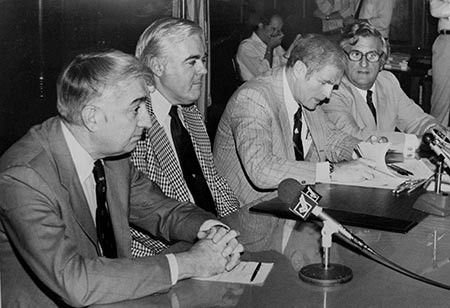 It all started on July 17, 1979, with the Public Transportation Act of 1979, which established NJ TRANSIT to “acquire, operate and contract for transportation service in the public interest.”
It all started on July 17, 1979, with the Public Transportation Act of 1979, which established NJ TRANSIT to “acquire, operate and contract for transportation service in the public interest.” Older railcars and locomotives were refurbished or replaced with ADA-accessible equipment. New high-level platforms were built for customers with disabilities and faster boarding and exiting of trains. Signals and overhead-wire catenary systems were modernized. Continuous welded rail was installed for a smoother, faster ride.
As on-time performance and service quality rose, so did ridership. That paved the way for more service expansion, including the launch of the Atlantic City Rail Line service, the launch of MidTOWN DIRECT service, the opening of the Newark Liberty International Airport Station, and the opening of the Frank R. Lautenberg Station at Secaucus Junction that today allows customers access to 11 of NJ TRANSIT’s 12 rail lines.
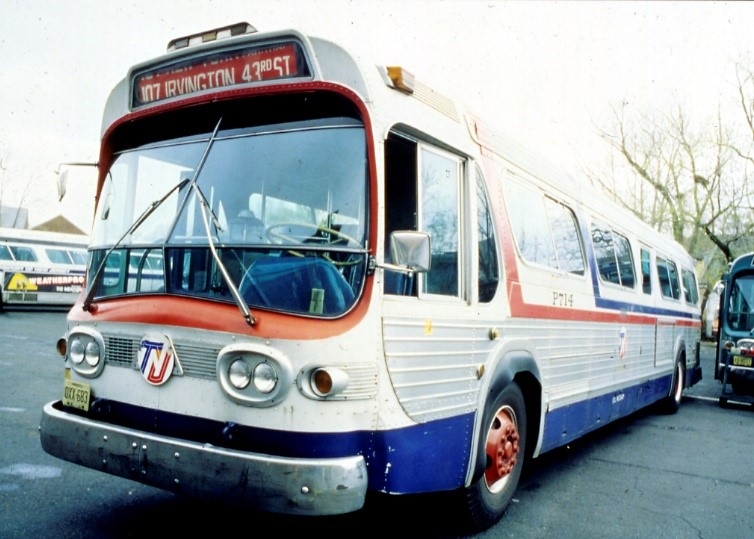 In January 1980, NJ TRANSIT purchased Transport of New Jersey, which was the state’s largest private bus company at the time.
In January 1980, NJ TRANSIT purchased Transport of New Jersey, which was the state’s largest private bus company at the time.NJ TRANSIT also centralized its maintenance and train dispatching functions in Kearny with the opening of the Meadows Maintenance Complex in 1987 and the Rail Operations Center in 2003. These facilities created a more modernized, reliable, and efficient method of maintaining and operating trains.
In December 2006, NJ TRANSIT combined its focus on capacity expansion with its ongoing efforts to improve the customer experience by debuting the system’s first multilevel rail car. Multilevel cars (what some may refer to as “Double Deckers”) offer approximately 20 percent more seating capacity than most single-level cars, enabling NJ TRANSIT to accommodate more customers using the existing infrastructure.
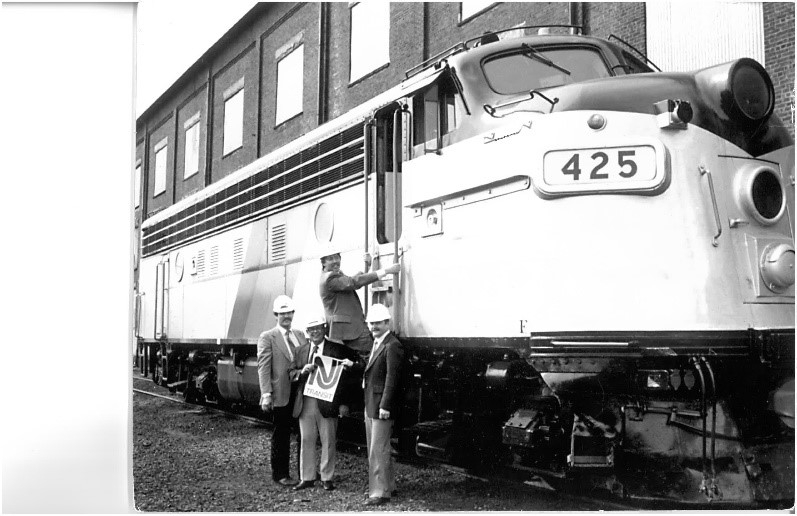 On January 1, 1983, NJ TRANSIT Rail Operations, Inc. was launched to assume operations of commuter rail service in the state after Congress ordered Consolidated Rail Corporation (Conrail) to cease its passenger operations
On January 1, 1983, NJ TRANSIT Rail Operations, Inc. was launched to assume operations of commuter rail service in the state after Congress ordered Consolidated Rail Corporation (Conrail) to cease its passenger operationsAt every phase, customers participated in the design of the new rail cars, making the multilevel rail cars the first of NJ TRANSIT’s fleet to be designed for customers by customers. A Customer Design Team, composed of 14 NJ TRANSIT commuters from across the system, worked with the manufacturer to provide feedback on interior design, onboard amenities, seat design, and color and fabric selection.
In December 2020, NJ TRANSIT had its Positive Train Control (PTC) system certified by the Federal Railroad Administration, which ushered in a new era of safety on the railroad. PTC serves as an enhancement to the railroad’s already comprehensive safety mechanisms to further reduce the possibility of train collisions, excessive speed, or unauthorized train movements by utilizing high-tech hardware and software installed throughout the state.
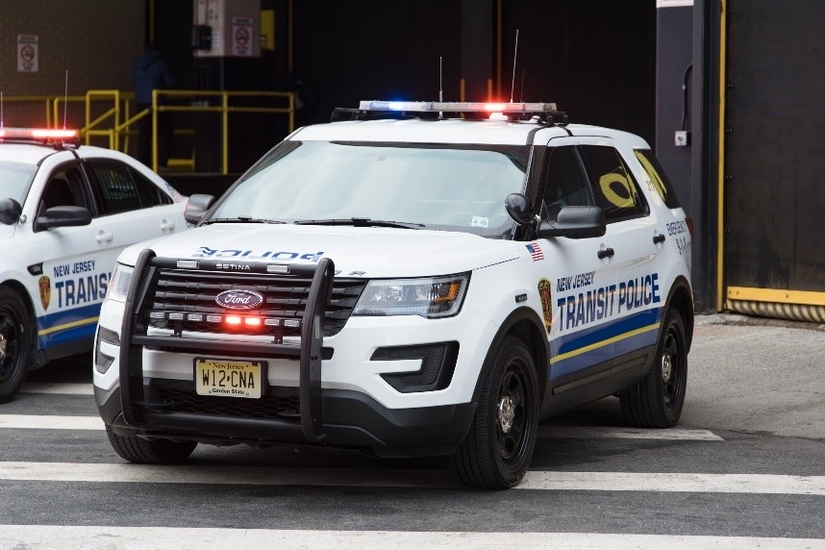 In January 1983, the New Jersey Transit Police Department was created. Today, the New Jersey Transit Police Department is the only transit policing agency in the country with statewide authority and jurisdiction.
In January 1983, the New Jersey Transit Police Department was created. Today, the New Jersey Transit Police Department is the only transit policing agency in the country with statewide authority and jurisdiction.Future of NJ TRANSIT Rail:
NJ TRANSIT continues to look to the future with new equipment, infrastructure, and enhanced customer experience. New bridges, redesigned stations, and modern cars and locomotives continue to leverage the latest technology to move the railroad forward.
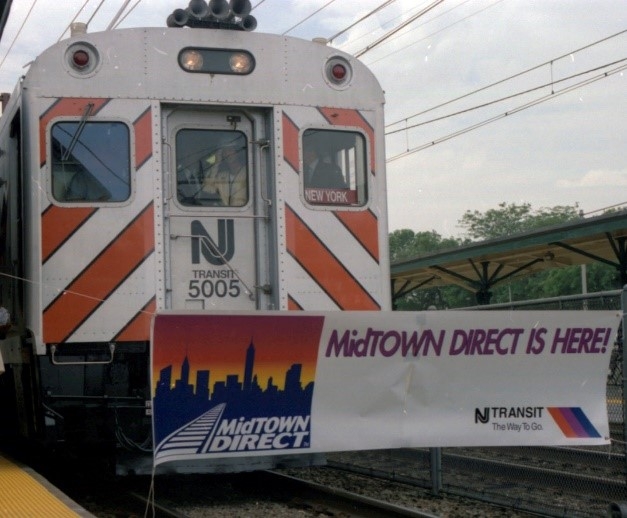 une 1996 launch of MidTOWN DIRECT service on the Morris & Essex Lines
une 1996 launch of MidTOWN DIRECT service on the Morris & Essex LinesInfrastructure:
In October 2021, NJ TRANSIT added another page to its history book when the Board of Directors approved the largest single construction contract in the organization’s 40 years, with the awarding of a $1.5 billion contract for a new Portal North Bridge.
The new bridge will be a modern two-track, high-level, fixed-span bridge that will improve service and capacity along this section of the Northeast Corridor. The new bridge will rise 50 feet over the Hackensack River and will allow marine traffic to pass underneath without interrupting rail traffic.
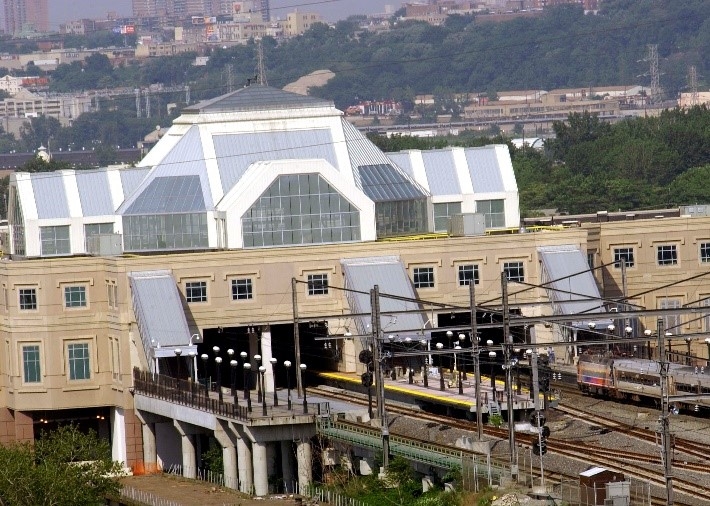 In 2003, Secaucus Junction opened. The historic $450 million station connects 10 of NJ TRANSIT’s 11 rail lines
In 2003, Secaucus Junction opened. The historic $450 million station connects 10 of NJ TRANSIT’s 11 rail linesThe project will eliminate the existing 112-year-old swing bridge, which has been the enduring source of major service disruptions for NJ TRANSIT and Amtrak customers traveling on the Northeast Corridor.
The Portal North Bridge project is an important initial element of the broader Gateway Program, which will eventually double the rail capacity between Newark and New York.
In addition, construction is underway on a new Raritan River Bridge, which carries the North Jersey Coast Line between Perth Amboy and South Amboy. This megaproject will replace a bridge dating back to 1908 with a resilient, modern structure suitable for the next 100 years.
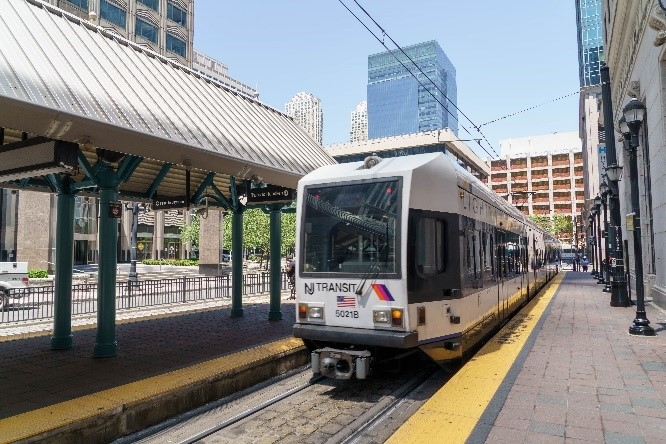 The HBLR connects the communities of Bayonne, Jersey City, Hoboken, Weehawken, Union City, and North Bergen.
The HBLR connects the communities of Bayonne, Jersey City, Hoboken, Weehawken, Union City, and North Bergen. Stations:
NJ TRANSIT is in the process of fully reimagining two of its major rail hubs; Newark Penn Station and Hoboken Terminal.
The Murphy Administration has committed $191 million to transform Newark Penn Station and $176 million for improvements around Hoboken Terminal.
Construction at Hoboken has also included filling in the unused Long Slip canal to prepare for future rail expansion with six new tracks and high-level platforms in addition to providing storm resiliency.
Major reconstruction work is underway at Elizabeth, Lyndhurst, and Perth Amboy stations with more stations including Roselle Park and Bloomfield in the pipeline. In all, 20 rail stations are in the design or active development phase for future work – there hasn’t been this much active station work on the rail system at one time since the 1800s!
Equipment:
In the coming years, NJ TRANSIT will put its first-ever self-propelled multilevel rail cars into service. Included in an order for 138 new multilevel cars are what’s known as Electric Multiple Units (EMUs), which do not require a locomotive to push or pull them. They will allow for the retirement of the 40+-year-old single-level Arrow fleet and bring with them increased mechanical reliability, additional capacity, and new onboard customer amenities such as USB power ports.
The railroad is also actively receiving additional dual-power ALP45 locomotives. In all, 25 of these new locomotives will join the fleet and continue to enhance the versatility of the railroad operations with their ability to operate as diesel or electric while also providing improved reliability and reduced emissions.
NJ TRANSIT Rail Operations Timeline:
1983 – NJ TRANSIT Rail Operations replaces Conrail as the operator of the commuter rail service throughout New Jersey
1983/1984 — New Comet II and Comet IIA railcars arrive and Overhaul of Arrow II railcars
1984 — Modernized electrification system debuts on the Morris & Essex Lines; 50+-year-old coaches replaced by modern Arrow railcars.
1986-1988 — Overhaul of Comet I railcars and conversion of Arrow I cars to Comet IB cars
1987 — Meadows Maintenance Complex opens
1988 — North Jersey Coast Line electrification extended from Matawan to Long Branch
1989 — Atlantic City Rail Line (ACRL) opens between Lindenwold to Atlantic City
1989-1995 — Arrow III railcars rebuilt
1990 — New ALP-44-0 electric locomotives arrive
1990/1991 — New Comet III railcars arrive
1993 — GP40PH-2-A locomotives rebuilt
1993 — Atlantic City Line service extended to Philadelphia’s 30th Street Station
1993-1997 — GP40PH-2-B locomotives rebuilt
1994 – Cherry Hill Station opens
1994 — Morristown Line/Boonton Line extended to Hackettstown
1996 — MidTOWN DIRECT debuts (M&E one-seat ride to NY) utilizing further deliveries of ALP-44 locomotives and new Comet IV railcars
1999 — Hamilton Station opens
1999 – Rollout of new system map with matching color-coded rail line timetables issued
2001 — Newark Liberty International Airport Station opens
2001/2002 — New ALP-46 electric locomotives arrive
2001-2004 — Comet II railcars rebuilt
2002 — 7th Avenue Concourse opens at Penn Station New York
2002 — Montclair Branch and Boonton Line consolidated, renamed the Montclair-Boonton Line and new Great Notch Yard opens, allowing the debut of MidTOWN DIRECT-Montclair
2002-2004 — New Comet V railcars arrive
2003 — Frank R. Lautenberg Station at Secaucus Junction opens (linking 11 of 12 NJ TRANSIT rail lines)
2003 — High-density signal system completed on the eastern segment of NEC, increasing train capacity to/from NY
2003 — Rail Operations Center opens in Kearny
2003 — Union Station opens
2004 — Ramsey Route 17 Station opens
2004 — Montclair State University Station opens
2004 — Morrisville Yard opens
2005 — New PL-42 diesel locomotives arrive
2006 — Multilevel railcars, designed with the help of customers, begin arriving
2007 — Expanded service on the Pascack Valley Line
2008 — Wayne/Route 23 Transit Center opens
2008 — Mount Arlington Station opens
2009 — Penn Station New York 31st Street entrance opens
2009 — Meadowlands Station opens
2009 — Trenton Transit Center renovated
2011-2013 — New ALP-45 dual-mode locomotives arrive
2013 – Pennsauken Transit Center opens
2016 — Wesmont Station opens
2018 - Elevator modernization program initiated to upgrade electrical and operating components of elevators systemwide
2019- Heritage fleet of coaches and locomotives decorated to honor NJ TRANSIT’s predecessor rail companies
2020 — Positive Train Control system successfully made operational and certified by the FRA/NJ TRANSIT breaks ground on the Raritan River Bridge Replacement Project
2021 — Portal North Bridge $1.5 billion construction contract approved and awarded
2021 – Locomotives decorated in tribute to armed services unveiled as NJ TRANSIT provides service to the Army-Navy game at the Meadowlands
2022 – Locomotive decorated in “Ride with Pride” scheme debuts, along with a heritage tribute scheme from the NJ Department of Transportation on GP40PH-2 41O1.
2022 – NJ TRANSIT breaks ground on the construction of the Portal North Bridge
Today, NJ TRANSIT covers a service area of 5,325 square miles and is the nation's third-largest provider of bus, rail, and light rail transit, linking major points in New Jersey, New York, and Philadelphia. The agency operates 253 bus routes, 12 rail lines, and three light rail lines statewide, as well as Access Link (paratransit service), providing nearly 270 million passenger trips each year.
Improve mental health accessibility in our town! Donate to Morristown, NJs local mental health accessibility fund today!
 Scan or click to donate!
Scan or click to donate!*The 2022 Local News Fund is a program administered by the Local Media Foundation, a 501(c)(3) organization affiliated with the Local Media Association. The program’s purpose is to allow independent and family-owned news organizations to solicit tax-deductible donations from their communities for journalism projects focusing on critical local issues. Contributions to this program are tax-deductible to the full extent of U.S. law; please consult a tax advisor for details.